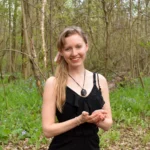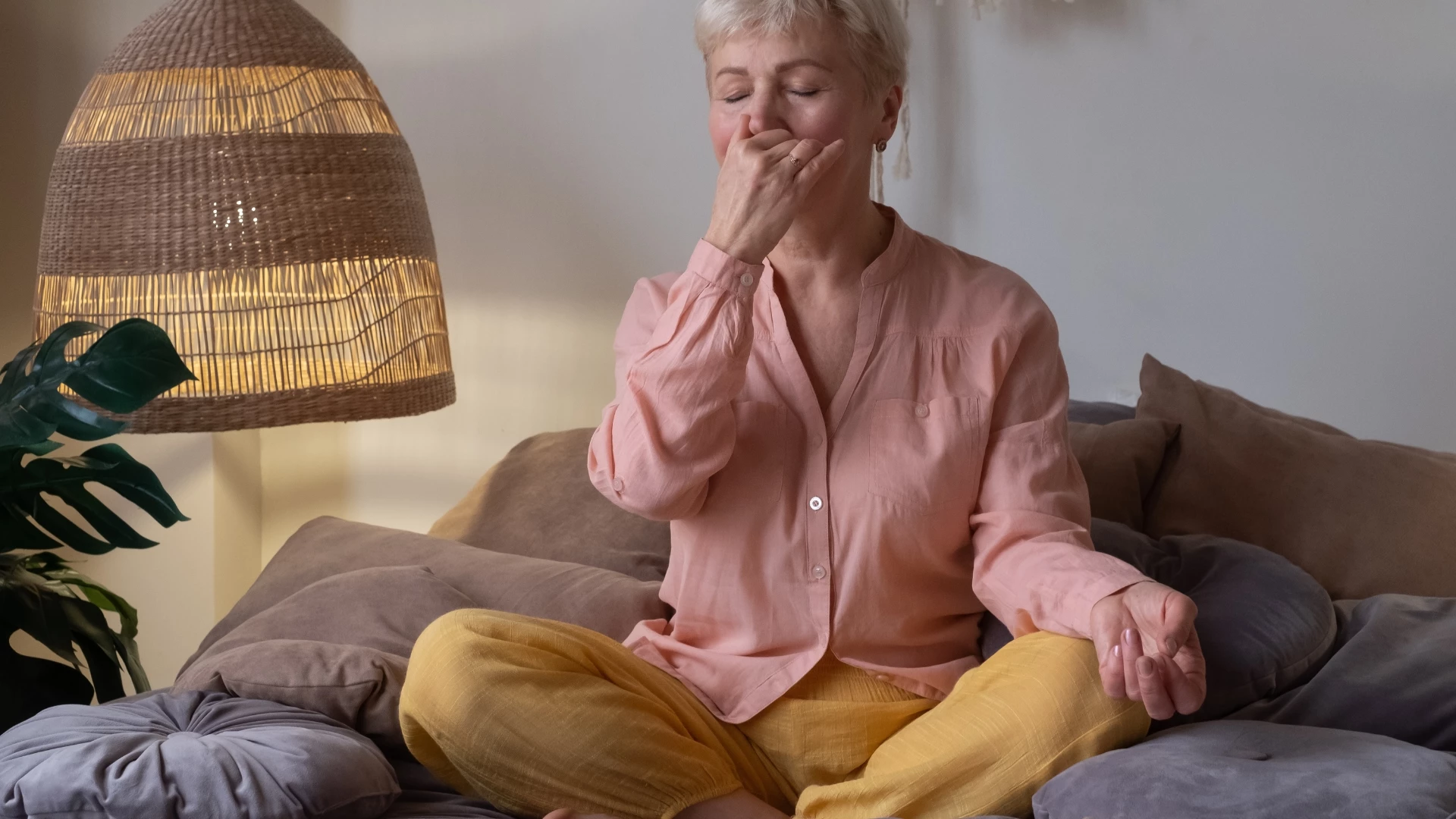Yoga Research: Exploring the Link Between Bone Density and Dementia

Article At A Glance
The emerging research on the link between bone density and dementia highlights yoga’s potential impact in promoting healthy bones and cognitive function. Today, Yoga teachers can empower students by integrating practices that target bone health and support brain function. By incorporating weight-bearing asanas, stress reduction techniques, and promoting a holistic lifestyle, yoga contributes to students’ overall well-being and potentially reduces their risk of developing osteoporosis and dementia.
It’s no secret that yoga can profoundly impact our physical and mental well-being. While yoga is often associated with improving flexibility and reducing stress, recent research has unveiled a fascinating connection between bone density and dementia. This article will explore this link, discuss the underlying mechanisms, and provide insight into how yoga can play a vital role in promoting healthy bones and cognitive function.
Dementia: Yoga as Preventative Medicine

Suppose you have ever had a family member or loved one with dementia. In that case, you know how debilitating and emotionally loaded the condition can be for the individual and their caregivers. Dementia is a progressive and irreversible decline in cognitive functioning that affects memory, attention, language, and more.
One of the most prevalent forms of dementia is Alzheimer’s disease, which is characterized by memory loss, impaired reasoning, motor difficulties, and psychological issues; as the disease advances, symptoms worsen, impacting various aspects of daily life. While there is currently no cure for dementia or Alzheimer’s disease, meditation and yoga may help patients cope with symptoms and potentially reduce the risk of developing these conditions.
Regular yoga practice is thought to help lower the risk of developing dementia through several mechanisms, including regulating blood pressure, reducing stress, promoting quality sleep, and providing an opportunity to stay mentally engaged through practices like meditation. In addition, when taken in a group setting, yoga classes provide a prime opportunity for individuals to stay socially active, which is especially important for dementia patients and those at risk of developing dementia.
Research on Yoga and Bone Density

Similar to what studies have shown on yoga’s impact on dementia risk, a growing body of research is beginning to highlight yoga’s role in supporting bone health. For example, a groundbreaking 10-year study coauthored by YogaUOnline contributor Dr. Loren Fishman (2) suggested that yoga, particularly poses that involve weight-bearing and strength challenges, can help build bone mass and slow or reverse bone loss in individuals with osteoporosis.
The study assigned a 12-minute daily yoga routine to participants with or at risk for osteoporosis and found significant improvements in bone density among those who consistently practiced yoga. Its authors suggest that yoga stimulates bone growth by exerting pressure on the bones and activating bone-making cells. This research highlights the potential benefits of yoga as a low-cost and safe alternative to prescription bone-loss medications, which often come with uncomfortable side effects.
New Research Exploring the Link Between Dementia and Bone Loss

To fill gaps in the research on dementia and its preventative factors, a recent study (1) examined the link between dementia and bone density. The study examined healthcare data from over 3,600 dementia-free participants and found that low bone mineral density, particularly in the femoral neck and lower spine, was associated with increased dementia risk later in life.
This research highlights the importance of understanding the relationship between bone loss and dementia to develop preventive strategies and optimize care for dementia patients. However, it’s important to note that this study shows an association, not a direct cause-and-effect relationship. The relationship between bone health and brain health still needs to be fully understood, and further research is needed to determine causation. But it is clear from previous research that maintaining bone health through a nutritious diet, exercise, and other lifestyle factors may promote brain health.
How Are Bone and Brain Health Linked?
Although further research is needed to understand the connection between bone and brain health, some researchers have theorized that dementia and low bone density are connected. For example, low bone density and dementia share common risk factors such as age, hormonal changes, and a sedentary lifestyle.
In addition, inflammatory pathways may play a role in dementia and low bone density. Researchers have identified chronic inflammation as a key factor in the development of both osteoporosis and dementia. Inflammatory markers, such as C-reactive protein (CRP), are associated with reduced bone density and cognitive impairment. For this reason, yoga’s stress-reducing and anti-inflammatory effects may help mitigate these risks.
 Finally, vascular health can play a role in both bone density and cognitive function. Poor blood flow compromises the delivery of nutrients to the bones and brain, affecting their health and function. Yoga practices that lower blood pressure, including Relaxation Pose (Savasana) and other meditation techniques, may positively impact vascular health and reduce the risk of both conditions.
Finally, vascular health can play a role in both bone density and cognitive function. Poor blood flow compromises the delivery of nutrients to the bones and brain, affecting their health and function. Yoga practices that lower blood pressure, including Relaxation Pose (Savasana) and other meditation techniques, may positively impact vascular health and reduce the risk of both conditions.
What Yoga Practices Are Best for Preventing Dementia and Bone Loss?
While additional research is needed to determine the frequency and duration of yoga practices that are most beneficial for preventing dementia and protecting bone density, experts believe certain practices are good preventative medicine for both conditions, including the following:
-
Weight-Bearing Postures

Weight-bearing yoga poses such as balance postures can stimulate bone-building cells (osteocytes) and help maintain or improve bone density. Although these postures can be helpful with proper alignment, students at risk for developing osteoporosis should modify weight-bearing yoga postures as needed to ensure safety and prevent fractures and falls. For example, balancing postures in or beside a chair can provide added support.
-
Stress Reduction and Meditation
Chronic stress contributes to releasing cortisol, which can accelerate bone loss and cognitive decline. Yoga’s emphasis on mindfulness and stress reduction, including meditation, mindful breathing, and relaxation techniques, can help regulate stress hormones, reduce inflammation, and support overall well-being.

-
Holistic Health Lifestyle Habits
Alongside yoga practice, students at risk of dementia or bone loss should be encouraged to adopt lifestyle habits that promote bone health and cognitive function. These include maintaining a balanced diet rich in calcium and vitamin D, engaging in regular weight-bearing exercises, and prioritizing quality sleep.

Conclusion on Yoga, Bone Density, and Dementia Ties
The emerging research on the link between bone density and dementia highlights yoga’s potential impact in promoting healthy bones and cognitive function. Today, Yoga teachers can empower students by integrating practices that target bone health and support brain function. By incorporating weight-bearing asanas, stress reduction techniques, and promoting a holistic lifestyle, yoga contributes to students’ overall well-being. It potentially reduces their risk of developing osteoporosis and dementia.
Also, read...
Related courses
Exploring the Stages of Being: The Yoga of Inner Peace
Livestream with Ellen Saltonstall: Yoga for Bone Health, Strength and Balance

Lacey Ramirez writes for YogaUOnline and is an ERYT-200 yoga teacher, global health researcher, and writer based in St. Louis. Through her work, she seeks to make yoga accessible, inclusive, and equitable.
Lacey discovered yoga as a tool for centering during her years as a competitive runner. Since then, yoga has served as a way to connect with her body throughout her experience of pregnancy and parenthood. She teaches because she hopes others can use this sacred practice for calming, healing, and transformation.
As a yoga teacher, Lacey specializes in teaching restorative, Yin, prenatal, and trauma-informed Vinyasa yoga. She has also completed birth doula and prenatal/postnatal barre certifications and trainings. Additionally, she holds a Masters of Science in Global Health and Population from Harvard T.H. Chan School of Public Health. To learn more and connect, visit her website laceyramirez.com
- Xiao, T., Ghatan, S., Mooldijk, S. S., Trajanoska, K., Oei, L., Gomez, M. M., Ikram, M. K., Rivadeneira, F., & Ikram, M. A. (2023). Association of bone mineral density and dementia: The Rotterdam Study. Neurology, 100(20), e2125–e2133. https://doi.org/10.1212/WNL.0000000000207220
- Lu, Y. H., Rosner, B., Chang, G., & Fishman, L. M. (2016). Twelve-minute daily yoga regimen reverses osteoporotic bone loss. Topics in Geriatric Rehabilitation, 32(2), 81–87. https://doi.org/10.1097/TGR.0000000000000085
- https://yogauonline.com/yoga-health-benefits/yoga-wellness/5-ways-yoga-may-help-dementia-patients/
- https://yogauonline.com/yoga-and-healthy-aging/yoga-for-osteoporosis/study-indicates-yoga-can-prevent-osteoporosis-related-bone-loss/
- https://yogauonline.com/yoga-and-healthy-aging/yoga-for-osteoporosis/4-bone-building-yoga-poses/





